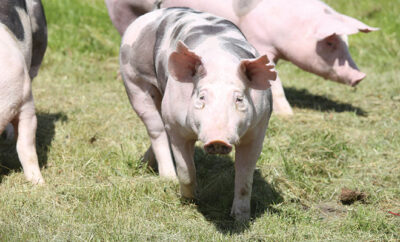
The Nutrition of Ancient Grains
One of my favorite breakfasts as a child was oatmeal. It still is; I’ve evolved from using prepackaged instant oats, the ones you can zap in a microwave in just 30 seconds, to
steel-cut Irish oats that require a good half hour of slow simmering on the stove.
The convenience of quick-cooking grains such as oats and rice means they’ll always have a place in the pantry. However, whole grains have had a place in pantries since ancient times. These grains must sometimes be soaked, much like beans, and often take longer to cook. They also deliver more nutrition than their quick-cooking cousins. Let’s explore eight grains that have been a source of nutrition for hundreds, or even thousands, of years, with a look at nutritional value of each one.
Bulgur wheat is the main component of tabbouleh, an Arabic dish that dates back about 4,000 years. It’s the perfect blend of grains, greens and healthy fats that’s considered part of a healthy diet. This savory summer salad blends bulgur with olive oil, lemon juice, herbs, spices and vegetables, then it’s chilled to let the flavors meld. Bulgur is high in fiber, at about 18 grams per serving. It is also a source of manganese, niacin, iron and vitamin B6.
Quinoa is a popular “new” ancient grain. Grown in South America, quinoa provides complete protein; it contains all nine essential amino acids and is gluten and cholesterol free. Said to promote a healthy immune system, quinoa provides 8 grams of protein per serving, fiber, riboflavin, thiamin and niacin. It also delivers 20 percent of the daily requirements for iron and phosphorus, together with 9 percent of potassium and 2 percent of calcium.
Barley is an ancient grain most familiar to Americans as an ingredient in soups and stews. With origins in Ethiopia and Southwest Asia, barley is thought to enhance immune properties as well as improve metabolism. This grain is high in fiber, B vitamins, iron, copper, manganese and selenium. It’s also low in calories and has less starch than pasta or rice. When you’re cooking with barley, you’ll find it absorbs a lot of liquid, so pay attention to cooking directions. Barley should be rinsed well before cooking, and requires at least three cups of liquid for every cup of barley.
Polenta is an Italian grain made from ground corn. Polenta can be used in the same way as corn meal–boiled, baked, fried or grilled. This grain delivers more protein than a large egg, at about eight grams per serving, and is high in vitamins A and C. Polenta made from whole-grain corn is rich in minerals such as iron, thiamin, zinc, phosphorus and magnesium.
Farro is also known as an Italian grain, but it was used in bread baking in ancient Egypt. This dense grain is also known as Emmer wheat. It’s high in fiber and protein as well as niacin, magnesium and zinc. It can be cooked as a side dish and used in soups and salads.
Spelt is a grain similar to farro in many ways. It dates back to medieval times, and although it is a member of the wheat family, people with wheat intolerance issues are sometimes able to tolerate spelt. This is another grain that is high in fiber, protein, magnesium, zinc and iron. It can be used as a side dish, in pasta and as a substitute for wheat flour in most recipes.
Kamut is a grain that dates back to ancient Egypt and Asia. It’s about two or three times the size of common wheat and has more protein and amino acids than common wheat. It is also high in essential fatty acids, the kind that help reduce “bad” cholesterol (LDL) and increase “good” cholesterol (HDL). In addition to being an excellent complex carbohydrate, kamut is a good source of thiamin, niacin, folate, riboflavin, vitamin B6, vitamin E, phosphorus, magnesium and zinc. This is a grain that is best when soaked in water prior to cooking, much like dried beans.
Moving from one of the largest grains to one of the smallest, we have teff, the seed of an Ethiopian grass. Ethiopian restaurants use teff to make injera bread, the spongy flatbread that accompanies stews. Uncooked teff can replace grains and seeds in baking. It can also be used to thicken soups and stews. This nutritious grain is made up mostly of bran and germ and is practically gluten free. Teff is high in protein and fiber and delivers nutrients including calcium, thiamin and iron.
If any of these grains are new to you, look for them at grocery or specialty food stores. Try something new and enjoy meals with more diverse carbohydrates. These foods will deliver quality nutrition that home cooks have served up for thousands of years.
Sources: coreperformance.com, exploratorium.edu and sunnylandmills.com.







